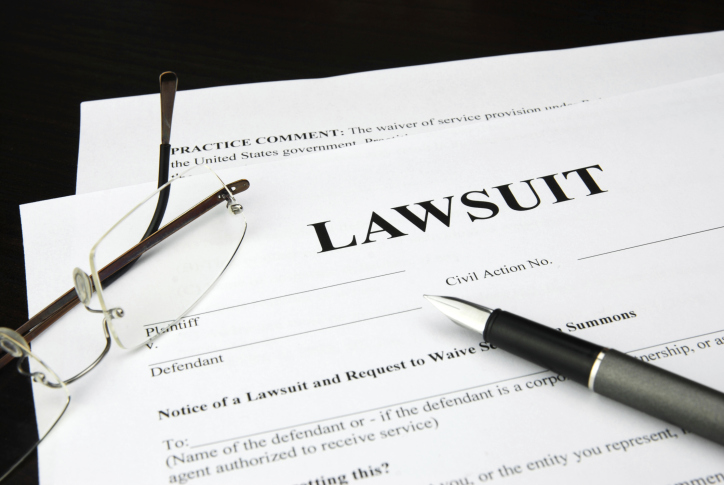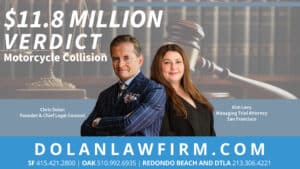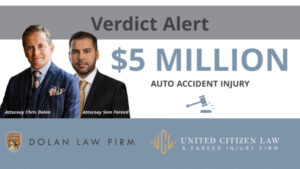 As trial lawyers, it falls upon us to paint the often bleak landscape of pain and suffering that is the backdrop to our client’s lives after tragedy. It is also our challenge to look squarely into the eyes of the jury and declare its value. This article provides proven strategies for effectively communicating loss in four challenging situations; 1) an employment case with no economic loss; 2) the case of the classic eggshell plaintiff ; 3) injury to the elderly and; 4) punitive damages.
As trial lawyers, it falls upon us to paint the often bleak landscape of pain and suffering that is the backdrop to our client’s lives after tragedy. It is also our challenge to look squarely into the eyes of the jury and declare its value. This article provides proven strategies for effectively communicating loss in four challenging situations; 1) an employment case with no economic loss; 2) the case of the classic eggshell plaintiff ; 3) injury to the elderly and; 4) punitive damages.
There is no room for equivocation or insecurity when voicing your client’s loss in closing argument. Conviction in both the approach to be taken, and the amount to be sought, is essential for a fair and just verdict. Requests that lack a firm foundation established through evidence not only harm the chance of success in your individual case, they damage the integrity of the system for all participants and tarnish the reputation of trial lawyers before the bench and the public. Ask for what is fair, not a penny more, not a penny less.
As we have seen over the last eight years of the current administration, the re-branding or renaming of unpopular concepts removes resistance to them. Melting ice caps, hurricanes, drought, and our depleting ozone layer have all been renamed by Carl Rove and his friends as “climate change” as if it were nothing more than a pleasant winter trip to Florida. Likewise, concepts of justice have been re-branded by these same spin masters to cause revulsion towards the principal of just compensation. A well thought out and orchestrated group of business interests have made “damages” and “damaged” dirty words synonymous with “victim” and “opportunist” thereby portraying hurt and injured people as weak and opportunistic. They have coined studied phrases such as “jackpot justice” and “lawsuit lottery” to prejudice juries against justly compensating injured plaintiffs. These are not approaches or principals associated with fairness or ethical compensation, they are manipulative strategies which seek to foster and develop the worst in people, the back side of the Darwinian cycle, rejection of the weak and injured. These forces subliminally state, fault the Plaintiff, if they are responsible for their injuries, you, juror no. 5, are less vulnerable because the Plaintiff brought it on themselves.
A successful lawyer recognizes her/his opponent’s strengths and, where possible, co-opts them as her/his own. We must change the nomenclature of the damages debate to humanize the concept of payment for loss. Instead of speaking about general and special damages, concepts which have no empathic appeal, we must speak in terms which invite and reflect compassion and empathy. Terms such as harm to the person, and loss to the pocketbook, are concepts that more readily accessible than general and special damages. Statements like “what has been taken can never be replaced but we must try and find a way to value the life that was, the freedoms lost, the innocence forever gone” humanize the debate.
Avoid the use of clinical legal terms such as “future medical specials,” or “future medical damages.” Instead, make these concepts more accessible as being the money which the patient requires to have the best possible chance of a semi-normal life. Rather than portraying your request as something that you “want,” make it clear that this is what the doctors have determined your client “needs” for a decent chance to try and reduce their pain, correct their deformity, and help them help themselves.
When an injured parent or spouse has suffered loss of income as the result of injury or wrongful termination, don’t talk about “special damages,” or “economic loss.” Instead, portray it for what it is in human terms, the destruction of the fragile financial security that held this family together, the loss of their identity, dignity, self sufficiency and dignity. Make sure that you communicate that your client was not a person who looked for a handout but, instead, they took care of themselves and their family until that ability was taken from them. Empower the jury to provide enough money to restore the security of this family which, but for the irresponsibility of the defendant, the family would do for itself.
Damages in Employment/Civil Rights Cases
Employment law is a relatively recent development in American Jurisprudence. Insurance companies new to this area of valuation, have, until recently, applied principals of personal injury modeling to calculating exposure for harms caused by unlawful employment practices. They were applying the tradition approach of basing general damage calculations on a multiple of special damages claiming that without the later, compensation for the former would be nominal. This trivialized the real and significant harms caused by denial of basic human rights in the workplace when the special damages were negligible. To combat this artifice of undervaluation, and to demonstrate the important social role which these cases play, it became apparent that a new paradigm needed to be established through the redefinition of the “employment case” as a civil rights case.
An example of this was presented in Issa & Rizkallah v. FedEx, which I tried on behalf of two Arab Americans who, after 9/11 had been mercilessly harassed on the basis of their national origin (Lebanese) and perceived religious orientation as Muslims (they were actually Christians). This case shattered the myth that without special damages there could be no significant general or punitive damage award.
The Plaintiffs in the FedEx case suffered no economic loss as they not only retained their jobs, their income increased year after year along with their torment. Presented with the challenge of overcoming juror bias and FedEx’s central theme that there could be no compensable harassment in the absence of termination and the presence of rising compensation, I re-framed the debate not as an action for damages, but as a civil rights enforcement action. The jury was empowered, through a brief history lesson that demonstrated the inequities which have plagued our society, to stand for the principals which our country heralds to be its foundation; equality, fairness and tolerance. They were shown that despite the proclamation that we stand for freedom, equality, and opportunity, we are actually a country which was founded upon, and which has cultivated, inequality. They were reminded of how during the Second World War, in California, our government rounded up all people who were of Japanese descent and interred them in camps. They were educated to the fact that civil rights in private employment did not even exist until the 1970’s with harassment only becoming unlawful in 1986. They were faced with the stark cold truth that we were a nation founded on the oppression of minorities which was limping its way towards equality.
I told the jury that people had marched and fought for these rights to be on the books but just as “faith without works is dead, laws without enforcement were simply broken promises.” I encouraged them, at this time when we as a nation are making war in an Arab Country, to stand for equality and freedom here in America, the very ideals that we were ostensibly fighting for overseas. I plead with them to stand for the principals of equality even when it may unpopular and reminded them that civil rights are designed to protect the minority. The jury was encouraged to see themselves as the purest form of democracy: twelve people who, with courage and conviction, could make a difference through their verdict and stand for a just and fair society where the rights of the minority were protected. They were asked to decide “what kind of America do you want to be” and they were encouraged to breath life into the often hollow rhetoric of freedom. (For a copy of the power point presentation email Chris@cbdlaw.com.) The jury was asked to enforce these important civil rights through a monetary verdict of 2.5 million dollars, per plaintiff, for the humiliation and dehumanization which had occurred and been endured by my clients. They were asked to provide a meaningful verdict to help my clients know that they mattered, that they were valued, and to help them heal. The Jury, empowered as the protectors of these important civil rights, awarded 5.5 million dollars, each, of my clients.
The Classic Eggshell Plaintiff
When confronted with the challenge of demonstrating how a seemingly minor incident can lead to catastrophic consequences, I have found the following technique to be helpful in reaching the jury. During closing arguments I remind the jury that society is comprised of many different types of people. I look directly at a large man in the jury and state that “Some people are rugged like football players or boxers. They can take a beating that would crush most of us a and get right back in the game.” I then look at an older or more frail looking man or woman and state, “Some people are frail, more fragile, or more susceptible to injury and do not rebound so quickly.” I say that even the defendants’ expert agrees that there are people who are, by their nature, more susceptible to harm than others and that even a sneeze can cause those people significant injury.
I state “Last night as I was thinking about this case, I was walking around my home and I reached for a piece of fruit. I went to pick up an orange and dropped it from about table height. It hit the ground, I picked it up, and put back in the bowl, got myself an apple and had a snack.” By this time I have already placed an orange on the plaintiff’s table where the jury can see it for themselves. I pick it up and state; “It got me to thinking. . . Some people are like oranges. They are strong, thick-skinned, and resilient. When they fall, get impacted or bounced around, nothing much happens to them.” I then bounce the orange on the bar of the jury box and watch as it bounces back in my hand like a tennis ball. I then state; “The law recognizes that not all people are like oranges. Some are more fragile.”
I then extract an egg from my suit pocket. I say, “Some people are like eggs. Indeed, the law has a term for a person who may be more susceptible to injury; they call them an “eggshell plaintiff.” I show them the CACI instruction on point and go on to say; “These people do not have the luxury of resilience. They do not bounce back as easily for whatever reason. It is not their fault, God, or circumstance, made them that way. ” I then take the egg and drop it from the same height as the orange, right next to it, on the bar of the jury box and watch as the jury looks to see if it is going to splatter all over them! (I use a hard-boiled egg.) With an audible crunching noise it has no rebound and lands, in contrast to the resilient orange, conspicuously still. I go on to state; “When these people have trauma, even trauma that would not affect most people, they get damaged. They crack like this egg. No, they are not destroyed. If you looked at them from a distance they appear intact, like this egg. But when you see them up close, and you examine them, as we have done in this case, you see that they are forever changed, harmed in a real and significant way. They are more vulnerable to injury and their damages are real, as real as the damages to this egg.” I even go on to say, “My client, Ms. X, is not an orange, she was not blessed to be born with that resilience, she is an egg under the law and the law that you swore to uphold requires that you compensate her for the harm caused to her, not the harm that an orange would suffer under similar circumstances.” I then outline the ways that the plaintiff has been harmed and what she needs to help her heal. At the end, I leave the two food items right at the end of the counsel table closest to the jury as a dare for defense counsel to address them. It keeps the image fresh in the jury’s mind. It works. Visuals are important.
Variations on this theme are to put the egg in a small index card box and drop the box on the floor. Don’t let your opponent know what is in the box, just push it off counsel table. Then show the jury how the box is not damaged but the egg inside is broken, cracked, etc. It visually demonstrates the concept that an occupant can be injured without significant damage to a vehicle and it is a useful tool for illustrating the concepts behind a closed head injury. I have used these techniques in trial to obtain multiple six and seven figure verdicts.
Injured Elders
When representing clients near the end of their statistical life expectancy, who, as the result of injury have had their independence and health taken from them, special challenges are presented when seeking damages. Defendants devalue the losses suffered by the elderly citing life expectancy tables as evidence that they will not have to endure for long. Likewise, they claim that natural aging processes would have led to disability, loss of mobility, and independence and, if any harm was caused, it was a slight advance of the inevitable. Unfortunately, jurors, especially younger ones, often agree. This bias can be overcome using a well established economic model that concretely conceptualizes the loss of these golden years.
When engaging the jury in a closing argument in such a case, I simply state that the loss suffered by my client is illustrated by the “diamond water paradox” (or the “paradox of value”). They inevitably cock their heads and lean forward a bit engaged by this unfamiliar concept. I begin by locating the ubiquitous water cooler present in almost every court room (if there is not I make sure to have a glass of water) and state that “Water is everywhere, even here in this room, and we assign little value to it as it is so plentiful, we give it away. Diamonds, on the other hand, are coveted and safeguarded because of their value derived from their scarcity. If I were to put a bag of diamonds in front of you next to a glass of water and told you to chose that which had more value to you, you would grab the diamonds. However, if we changed your perspective, placed you in the desert for three days, with no relief or water in sight, you would quickly change your value system as your life dwindled and water was needed for your very survival. When we are in adolescence, it is like being here in this room, our health and longevity is like the water in that jug, abundant, ever present, seemingly without end, and consequently, as demonstrated through youthful actions and indiscretions, of little appreciated value.
We trade our health for the risk of excitement and the vices of entertainment confident that we will recover and rebound. Yet when we are older, nearer to the end of our days, we value that which gives us health, sustains our life, and our independence. We cherish our fading independence, and do all we can to preserve our health. Our health and independence is like water in the hot desert sun, priceless. Therefore, contrary to any argument that can be raised by the defendant to the effect that the remaining days of my client’s life should be devalued, I stress that, due to their scarcity, they are the most valuable and cherished and, therefore, more valuable then diamonds, here or in the desert.
One Percent For Justice
In the rare (and gratifying) event that you find yourself with a finding that the defendant engaged in fraud, oppression, or malice, and that defendant is one of substantial economic girth, I offer the following approach, taken from one of my actual trial transcripts resulting in a 50 million dollar punitive damages award.
. . . . Is there a relationship between the amount of punitive damages and Kamil and Edgar Rizkallah’s harm? And in view of the defendant’s financial condition, what amount is necessary to punish him or it — and discourage future wrongful conduct? What is it going to take to get the message across to these folks? . .
So how do you figure out what the appropriate amount of punitive damages is for the company? Well, we had brought with us a hundred pieces of paper to day to use as an example. I am not going to pull them out because I don’t want to get another objection. I just want to keep moving. A hundred pieces of paper. . . If you had a hundred pieces of paper which constituted one hundred percent of a company’s net worth, one hundred dollar bills, and somebody took one, would it kill them? Would they notice it? Would they even know it was gone? That’s the way you should look at this because you heard what their net worth is, $2.37 billion. How do you get their attention? Apparently, the trial didn’t do it.
Apparently, an $11 million verdict didn’t do it. So how do you get their attention without being obscene? Which is not what we want to be because I also heard you say — and I said it before — that you folks are against crazy verdicts. But this isn’t crazy. If you take one percent they may not even notice that it’s gone. But somebody will. Some boss at the top of the line is going to say “Hey, wait a minute, guys. This is effecting our bottom line.” One percent is $23.7 million. We’re asking for a minimum of one percent for each. That’s two pieces of paper out of their stack. Is it going the kill this company? No. You’ve heard them, they’re growing. They’re growing up wards. Hundreds and hundreds of millions of dollars of revenue every year. They are skyrocketing. They have got a good business model, bad people skills, but a good business model. But to make them have good people skills too, you need to have this thing be big enough that it sends a real ripple so that people actually know what’s going on. You need to do this without crippling anybody, without destroying the shareholders. They’re making more money every year, this is not going to cripple them, but we hope it will get their attention, finally.
We want one percent in punitive damages of their net worth for each of my clients. One piece of paper out of that stack from which they will not go hungry. $23.7 million each for a total of $47.4 million in punitive damages.
And I’m sure Counsel is going to say, “This not the lottery.” “This is not what this is about.” “That is huge. It’s going to cripple us.” “That Mr. Dolan is throwing around huge numbers, that this is the problem with the system today.” “Our conduct is not that bad, we’re a good company. We’re doing it.” We’ve heard all of that before, and they are still a problem here. One percent should wake them up. One percent should send a message. One percent for justice. . . .
I’m going to end with the same quote that I gave you yesterday because this is the quote by which I live my life and why I do the things I do. From Margaret Mead: “Never give up believing that a small group of committed thoughtful people could change the world. Indeed. It is the only thing that ever has. Thank you.”
To my not so small group of committed trial lawyer friends, I hope these strategies help you in helping your clients make positive change.










